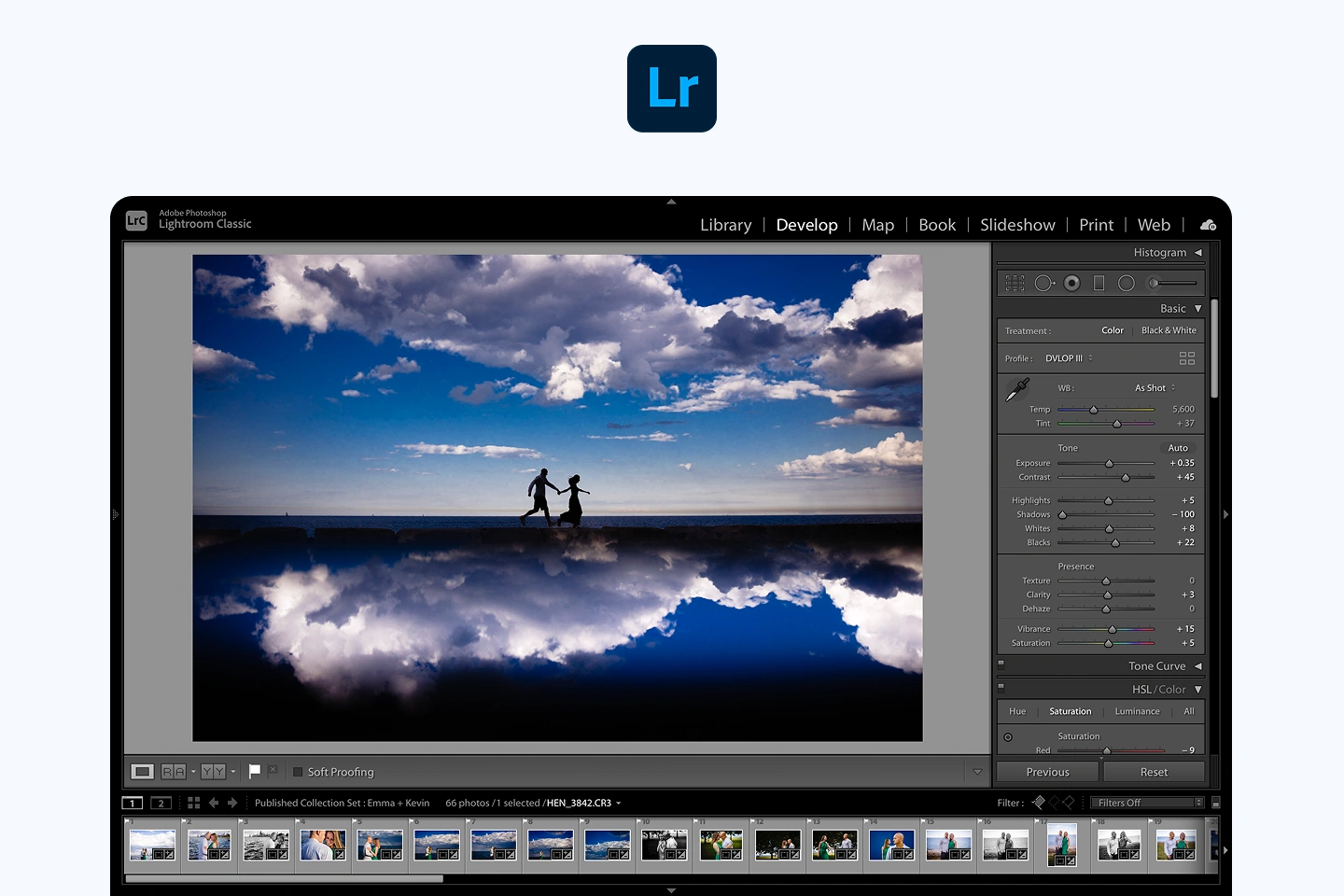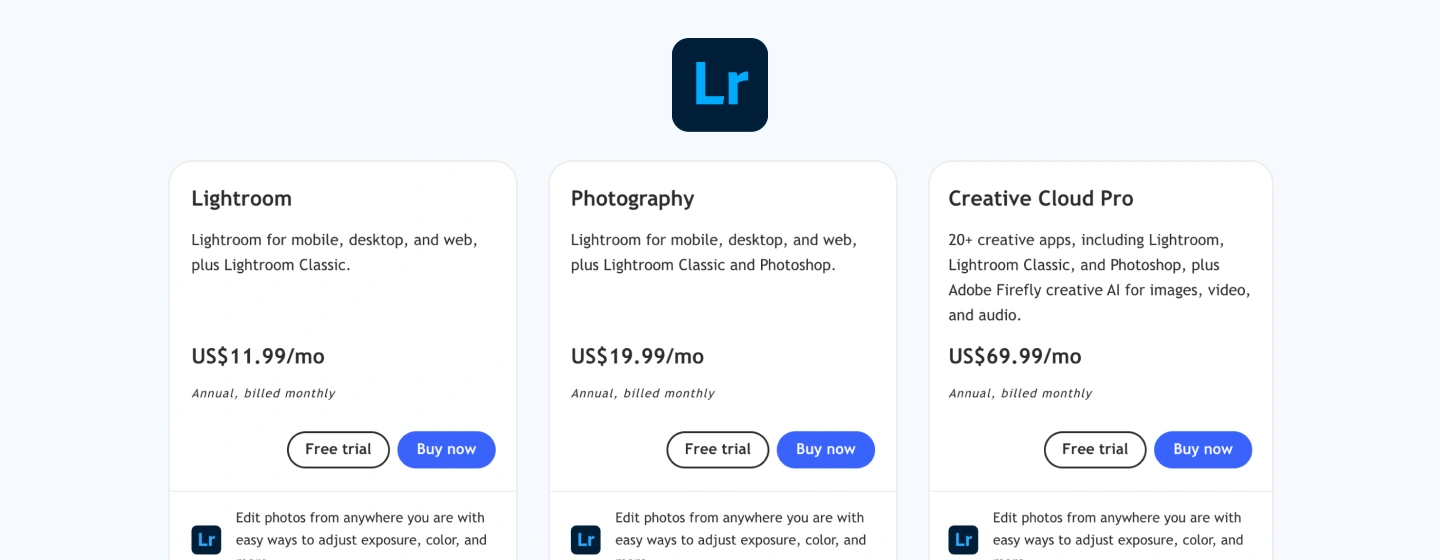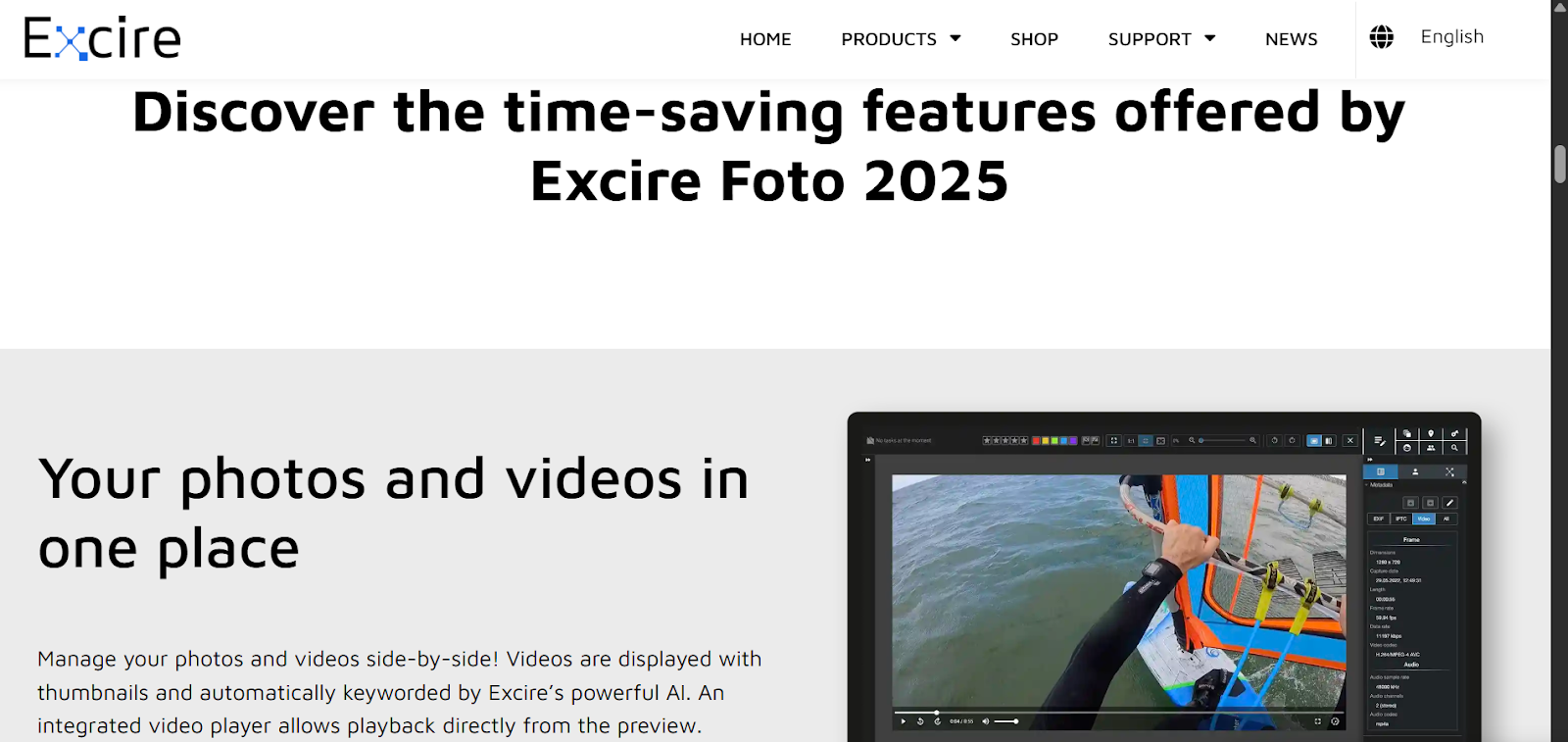Top Photo Tagging Software for Fast, Organized Photo Workflows
Discover the best photo tagging software for faster image organization. Compare features, pricing, and tools creatives love, including Picflow
)
Quick Summary
Tagging photos is a hack for staying organized and efficient, especially when handling multiple photo projects. With a simple but smart software, you can instantly find what you need, when you need it. We’ve compiled a list of the top photo tagging software to streamline your workflow.
This article highlights the best photo tagging software for creatives and professionals. It covers key features, pricing, and unique benefits of each platform, from AI-powered tools to fast metadata managers. This guide will help you choose the right solution for tagging, sorting, and delivering your photos with ease. Visit the Picflow Blog to learn more about improving your creative workflow.
Want to Find the Best Photo Tagging Software for Your Workflow?
Keeping a growing photo library organized is no small task. If you're managing thousands of client images or curating years of creative work, manually tagging and sorting files can slow down your entire process. That’s where photo tagging software comes in.
The right tool helps you label, categorize, and find your images in seconds. It adds structure to your workflow, simplifies asset retrieval, and saves valuable time.
In this Picflow article, we’ll share the best photo tagging software so you can choose the one that fits your needs and creative goals.
Why Listen to Us?
At Picflow, we help creative professionals deliver stunning client galleries, manage visual assets, and streamline feedback. From individual photographers to fast-moving marketing teams, lots of users trust us to simplify how they organize and present their work.
Our hands-on experience building a platform for creative collaboration gives us unique insight into what makes a photo tagging software practical, efficient, and user-friendly.

What is Photo Tagging Software?
Photo tagging software is a tool that helps you organize and label your digital images using keywords, metadata, or categories. Instead of manually sorting through folders, these tools allow you to assign searchable tags to each photo, making it easier to locate, group, and manage your files.
Some platforms use artificial intelligence to automate the tagging process, saving even more time. For creatives who work with large volumes of content, photo tagging software is essential for staying organized and efficient.
Instead of wasting time digging through folders, you can quickly search for photos based on:
Keywords: such as "sunset," "portrait," or "product shoot"
Metadata: like date, location, camera settings, or client name
Categories: tied to projects, image status (e.g., approved, needs editing), or usage rights
Many modern photo tagging platforms offer even more advanced capabilities, including:
Batch Tagging: Apply tags to multiple photos at once
Facial Recognition: Automatically detect and tag people in your images
Private Comments: Share internal feedback or notes that are only visible to your team
Smart Search: Instantly locate images using combinations of filters, tags, and keywords
Why Do You Need Photo Tagging Software?
Faster Search: Quickly locate specific images by using tags, so you don’t waste time digging through folders or filenames.
Improved Organization: Keep your growing photo library structured by tagging images based on client, project type, subject, or date.
Enhanced Workflow: Streamline your creative process by using tags to batch edit, filter, and sort large sets of image files.
Client Clarity: Help clients easily review, choose, and approve images by organizing galleries with clear, relevant tags and labels.
Metadata Control: Maintain tagging consistency by managing keywords, star ratings, and custom labels across your entire photo collection.
Our List of the Top 7 Photo Tagging Software
Picflow
Adobe Lightroom
Excire Foto
digiKam
Photo Mechanic
Mylio Photos
Google Photos
ACDSee Photo Studio
1. Picflow
Picflow is a photo collaboration and gallery tool designed specifically for creative professionals who need more than simple storage.
It allows users to upload, tag, organize, and deliver images in beautifully branded galleries that look great on any device. What sets Picflow apart is its focus on visual presentation and client communication, combining tagging and feedback tools in one intuitive workspace.

Users can apply tags like color labels, flags, and metadata filters to streamline image selection and review processes. With drag-and-drop gallery design, privacy settings, and workflow-specific tools, Picflow helps teams and solo creatives manage content faster and more effectively. It’s ideal for photographers, marketers, and agencies looking to simplify approvals and elevate delivery.
Key Features
Tagging and Review Tools: Use flags, favorites, color labels, and annotations to organize images and gather actionable client feedback.
Branded Galleries: Customize the layout, add your logo, and control image sizes for a polished presentation experience.
AI-Powered Automatic Tagging: Picflow’s upcoming AI tagging feature scans every asset with advanced computer vision and automatically applies 3–10 smart tags on every asset. These AI-generated tags work alongside your manual tags, helping you stay organized without lifting a finger.
Metadata Tag Import: Already have a tagging system in Lightroom or Capture One? Picflow reads existing tags from your image metadata and applies them automatically, keeping your workflow smooth and consistent from the moment you upload.
Workflow Mode: Speed up your culling and delivery process with filters, bulk actions, filename exports, and status tracking.
Secure Sharing: Generate password-protected links, manage download access, and track viewer engagement with every gallery.
Integrations: Seamlessly connect with Dropbox, Google Drive, and embed Picflow galleries on your website or client portal.
Advanced Permissions: Control access with password protection, link expiration, and visitor identification.
Integrations & Embeds: Import from Dropbox, Drive, and Box, and embed galleries on your website.
Pricing

Free Plan: Includes 2 GB of storage and core sharing tools.
Plus: $12/month with 100 GB of storage and advanced review features.
Pro: $24/month with 1 TB of storage and full access to all tools.
Biz: $149/month with team collaboration tools and 5 TB+ storage.
Enterprise: Custom pricing available for larger organizations.
Pros
Designed specifically for creatives with a focus on presentation and feedback.
User-friendly gallery builder with extensive branding options.
Smart tagging tools make it easy to track and sort client feedback.
Unthrottled upload speeds and fast image delivery.
Flexible plans that scale from solo creatives to full teams.
Cons
Offline functionality is limited due to its cloud-first design.
Some collaboration features require higher-tier plans.
2. Adobe Lightroom
 Adobe Lightroom is a comprehensive photo editing and asset management platform trusted by photographers worldwide. Built to handle everything from capture to delivery, Lightroom makes tagging, organizing, and enhancing images incredibly efficient.
Adobe Lightroom is a comprehensive photo editing and asset management platform trusted by photographers worldwide. Built to handle everything from capture to delivery, Lightroom makes tagging, organizing, and enhancing images incredibly efficient.
Users can assign custom keywords, create hierarchical categories, and apply metadata to photos for quick filtering and searches.
Key Features
Keyword Tagging: Organize images by applying manual or batch keywords, which can be searched or filtered at any time.
Facial Recognition: Automatically identifies and groups faces, simplifying portrait management and personal photo organization.
Metadata Management: Edit and embed EXIF, IPTC, and XMP metadata to enhance sorting, licensing, and image traceability.
Smart Albums: Automatically organize photos based on tags, ratings, and other criteria for easy browsing and export.
Presets & Batch Editing: Apply your custom or pre-made presets to multiple images for consistent style and fast workflow.
Pricing

Photography Plan (20 GB): $9.99/month with Lightroom, Photoshop, and limited cloud storage.
Photography Plan (1 TB): $19.99/month for expanded storage.
Lightroom Plan (1 TB): $11.99/month for Lightroom only, ideal for non-Photoshop users.
Pros
Industry-standard editing and tagging tools in one ecosystem.
AI-assisted search and organization features save time.
Cloud-based syncing across desktop and mobile apps.
Strong integration with other Adobe Creative Cloud apps.
Cons
The subscription model may not suit occasional users.
It may take time for beginners to learn.
Less optimized for client delivery and collaboration compared to gallery-focused tools.
3. Excire Foto
Excire Foto is an AI-powered photo management software designed to streamline the organization and retrieval of large image collections. Through its advanced artificial intelligence, Excire Foto automatically analyzes and tags photos based on content, allowing users to search for images using keywords, faces, colors, and even aesthetic qualities.

Key Features
AI-Based Auto-Tagging: Automatically assigns keywords to images based on visual content, such as objects, scenes, and colors.
Facial Recognition: Identifies and groups photos of the same person, facilitating easy organization of portraits and group shots.
Aesthetic Analysis: Evaluates images for visual appeal, helping users select their best photos quickly.
Offline Functionality: Operates entirely on your local machine, ensuring data privacy and eliminating the need for internet access.
Advanced Search Options: Allows users to search for images using free-text, keywords, faces, and even GPS data.
Pricing

Excire Foto 2025: One-time purchase of $199, with occasional discounts available.
Free Trial: 14-day trial version available for download.
Pros
Powerful AI-driven tagging and search capabilities.
Operates offline, ensuring complete data privacy.
User-friendly interface suitable for both amateurs and professionals.
One-time purchase with no subscription fees.
Cons
Limited integration with other photo editing software.
Primarily focused on organization; lacks advanced editing tools.
Doesn’t support client galleries, team workflows, or shared access features.
4. digiKam
digiKam is a free and open-source photo management application that offers a comprehensive set of tools for importing, managing, editing, and sharing digital photos.
Designed for photographers who require advanced capabilities, digiKam supports a wide range of image formats, including RAW files, and provides extensive metadata editing, tagging, and search functionalities.

Key Features
Comprehensive Tagging System: Supports hierarchical tagging, labels, and ratings to organize images effectively.
Facial Recognition: Automatically detects and tags faces, streamlining the organization of portraits.
Geotagging: Allows users to assign geographic coordinates to images, enabling location-based searches.
Image Editing and Enhancement: Built-in editor for cropping, color correction, noise reduction, sharpening, and more.
RAW Processing and Format Support: Compatible with hundreds of camera RAW formats, plus JPEG, PNG, TIFF, HEIC, and more.
Pricing
Free: Open-source software available at no cost.
Pros
Extensive features comparable to commercial software.
Supports a wide range of image formats and metadata standards.
Active community and regular updates.
Cross-platform compatibility (Windows, macOS, Linux).
Cons
Steeper learning curve due to the abundance of features.
User interface may appear dated compared to modern applications.
No built-in syncing or cloud backup features; primarily local storage focused.
5. Photo Mechanic
Photo Mechanic is a fast and reliable photo browsing and tagging tool widely used by professional photographers, especially in the fields of photojournalism and sports photography. It excels in quickly ingesting, culling, and organizing large volumes of images, allowing photographers to add metadata, captions, and keywords efficiently.
 Key Features
Key Features
Fast Ingestion and Culling: Quickly imports and previews images, enabling rapid selection and rejection.
Metadata Templates: Applies IPTC metadata, captions, and keywords to images using customizable templates.
Code Replacement: Automates the insertion of frequently used text strings, speeding up captioning.
Batch Processing: Allows simultaneous application of metadata and renaming to multiple files.
Integration with Editing Software: Seamlessly works alongside applications like Adobe Photoshop and Lightroom.
Pricing
Photo Mechanic Standard: One-time purchase of $149.
Photo Mechanic Plus: One-time purchase of $249, includes cataloging features.
Free Trial: 30-day trial available.

Pros
Exceptional speed in handling large image volumes.
Robust metadata and keywording tools.
Ideal for time-sensitive photography workflows.
View multiple images at once to choose the best shot, great for reviewing similar frames.
Cons
Lacks advanced photo editing capabilities.
User interface may feel outdated to some users.
Primarily focused on metadata management; not a comprehensive DAM solution.
6. Mylio Photos
Mylio Photos is a comprehensive photo management application designed to help users organize, edit, and protect their digital memories across multiple devices. It offers advanced features like face recognition, geotagging, and calendar-based organization, allowing users to sort and locate photos efficiently.

Key Features
Face Recognition and Tagging: Automatically detects and tags faces in photos, streamlining the organization of portraits and group shots.
SmartTags: Utilizes AI to assign descriptive tags to images based on content, enhancing searchability.
Batch Face Tagging: Allows users to confirm and apply face tags to multiple photos simultaneously, saving time.
Cross-Device Synchronization: Keeps your photo library updated and accessible across all your devices without relying on cloud storage.
Calendar and Map Views: Organizes photos by date and location, providing intuitive ways to browse your collection.
Pricing
Free Plan: Offers basic features with limited device support.
Individual Plan: Priced at $20 per month.
Family Plan: Priced at $40.99/month, supports up to 12 devices and includes all premium features.

Pros
Operates locally, ensuring privacy and control over your photos.
Robust face recognition and tagging capabilities.
Efficient organization through SmartTags and calendar/map views.
Seamless synchronization across multiple devices.
Cons
Initial setup may be complex for some users.
Limited cloud storage integration compared to other services.
Lacks the advanced editing capabilities of tools like Lightroom or Capture One.
7. Google Photos
Last on our list is Google Photos, a cloud-based photo storage and management service that offers users the ability to back up, organize, and share their images effortlessly.
It employs advanced AI and machine learning algorithms to automatically categorize photos based on people, places, and objects, making it easy to search and retrieve specific images.

Key Features
Facial Recognition and Grouping: Automatically identifies and groups photos of the same person, allowing users to label and search for individuals easily.
AI-Powered Search: Enables users to search for photos using natural language queries, such as "beach sunset" or "birthday party."
Automatic Album Creation: Generates albums based on events, locations, or people, simplifying organization.
Cross-Platform Accessibility: Provides seamless access to your photo library across Android, iOS, and web platforms.
Editing Tools: Offers basic photo editing features, including filters, cropping, and adjustments.
Pricing

Free Plan: Includes 15 GB of storage shared across Google services.
Google One Plans: Additional storage options starting at $1.99/month for 100 GB, with higher tiers available.
Pros
Advanced AI features for automatic organization and search.
Simple interface with seamless device integration.
Generous free storage allocation.
Regular updates and feature enhancements from Google.
Cons
Privacy concerns due to data being stored on Google's servers.
Limited manual tagging options compared to other software.
Some features may not be available in all regions.
8. ACDSee Photo Studio
ACDSee Photo Studio is a photo management and editing suite that has been a favorite among professional and enthusiast photographers.
What sets it apart is its robust Digital Asset Management (DAM) capabilities, particularly its advanced keyword tagging, metadata control, and visual organization tools.

Key Features
Hierarchical Keyword Tagging: Create and manage nested keyword lists for easy tagging and organization of large libraries.
Facial Recognition & Face Detection: Automatically identify and tag individuals across your photo collection.
Category and Color Label System: Use custom categories, color labels, and ratings to visually organize files.
Metadata Management (EXIF, IPTC, XMP): View, edit, and batch-apply detailed metadata across thousands of files.
Powerful Search and Filtering: Find photos using combinations of tags, metadata, dates, and ratings.
Pros
One of the most powerful tagging systems available
Ideal for organizing massive archives
Great for pros who need both DAM and editing tools
Fast performance even with large libraries
Cons
Windows-focused (Mac version is limited)
Interface can feel cluttered for new users
Learning curve due to its depth of features
Picflow Simplifies Photo Tagging Better Than the Rest
Choosing the right photo tagging software can transform how you organize, manage, and share your images. With features like AI-powered tagging, smart search, and collaboration tools, these platforms save you time and reduce the stress of managing large photo libraries. .
Investing in the right photo tagging software helps you focus more on your creative work and less on the tedious task of sorting files. It brings together intuitive tagging options, secure sharing, and customizable galleries in one fast, user-friendly platform.
Try Picflow for free and experience the smartest way to tag and share your photos.



)